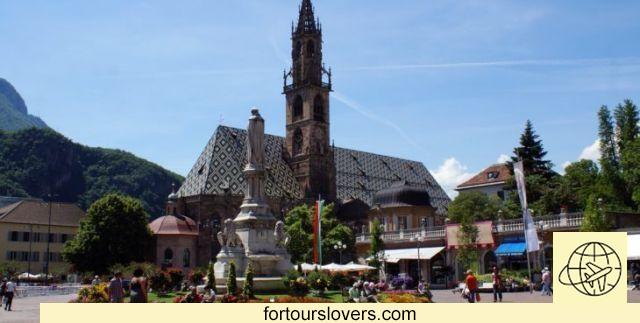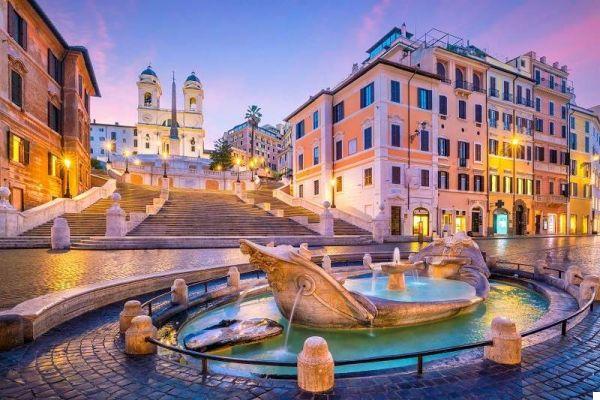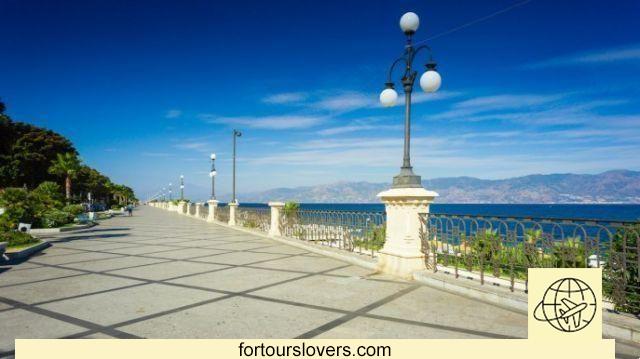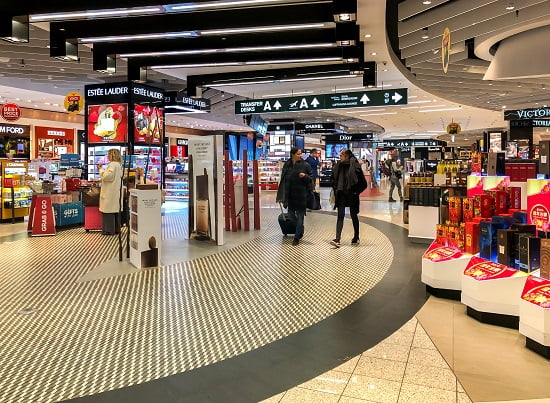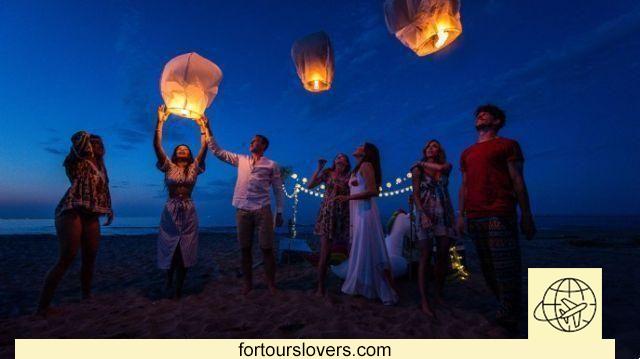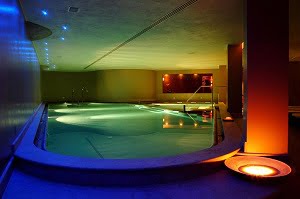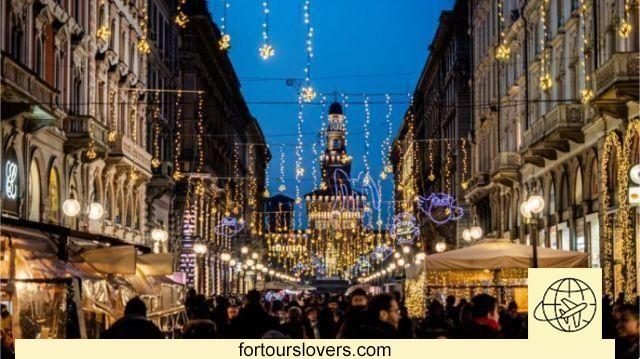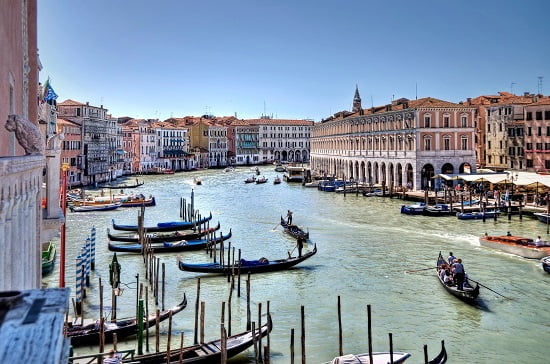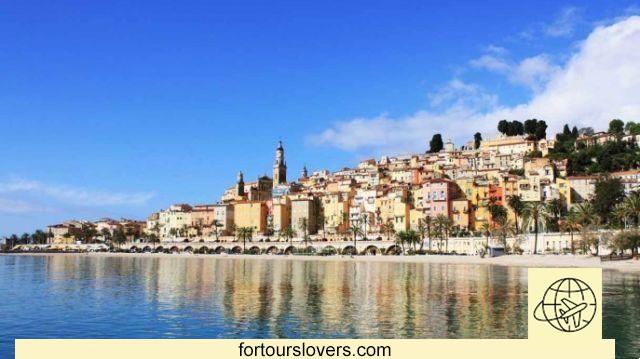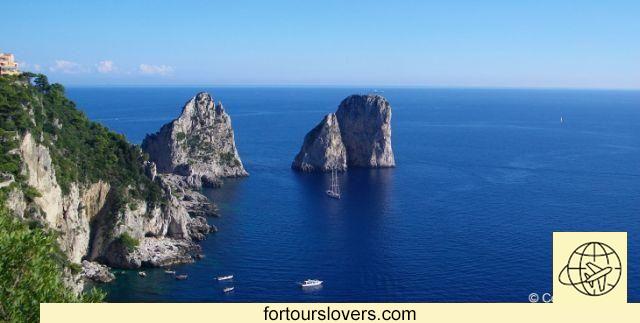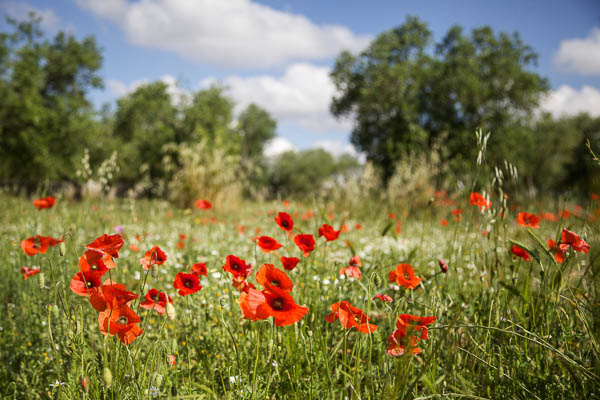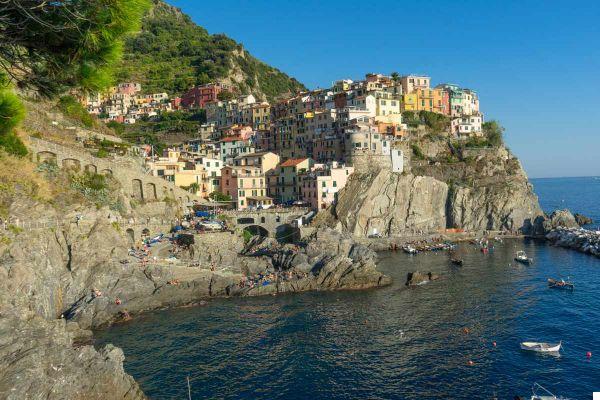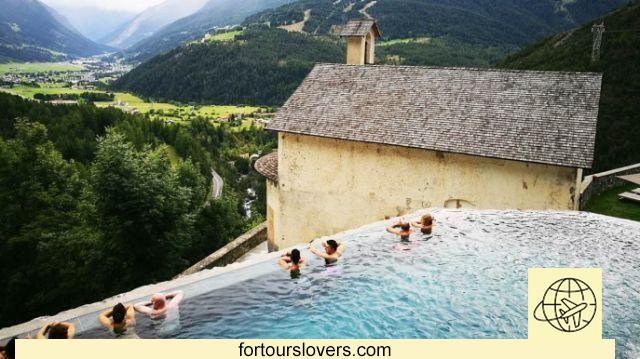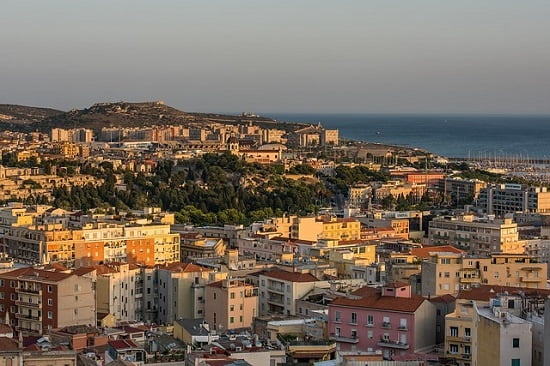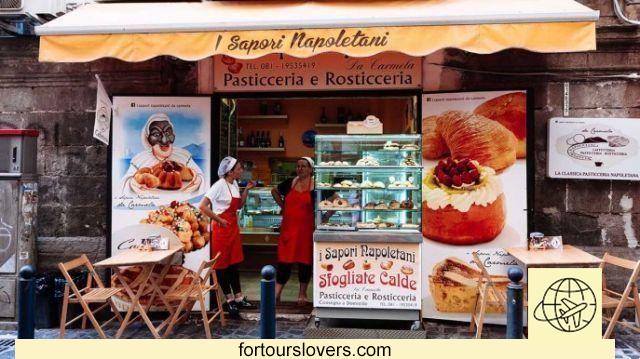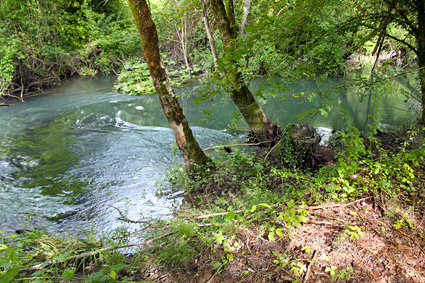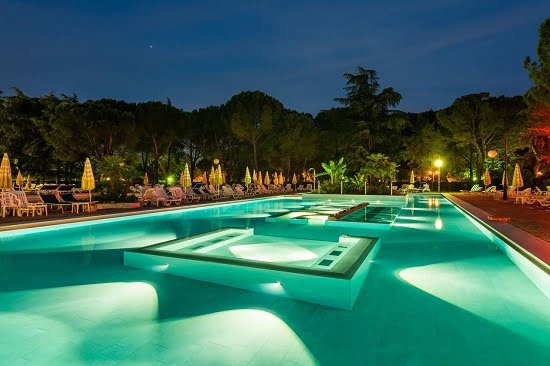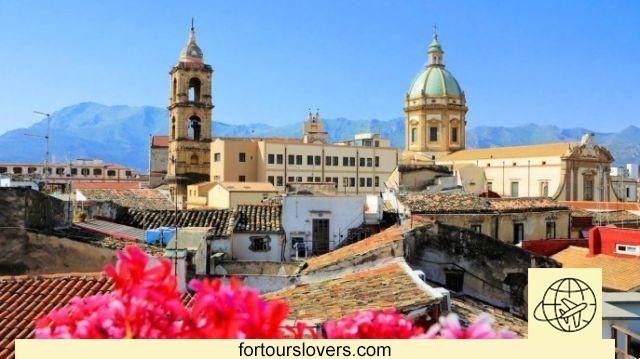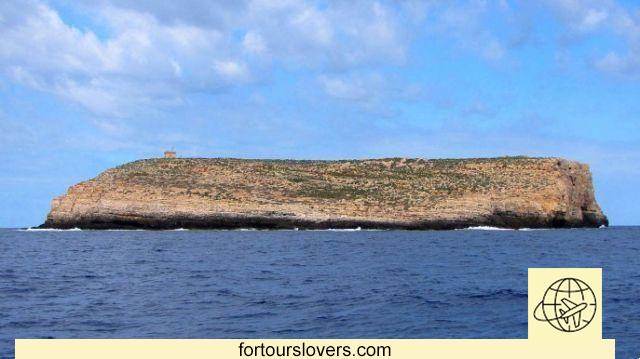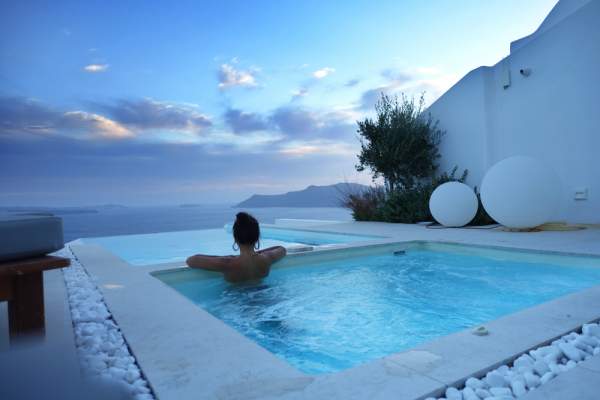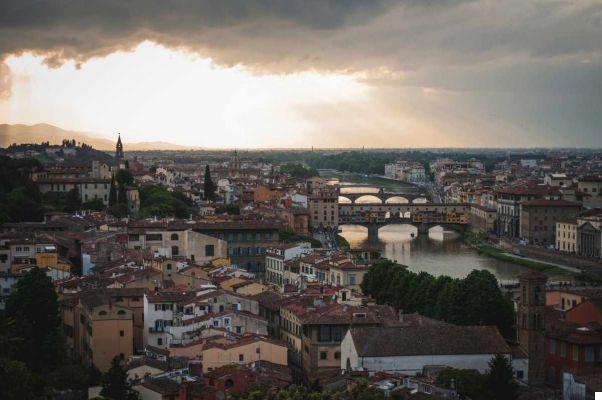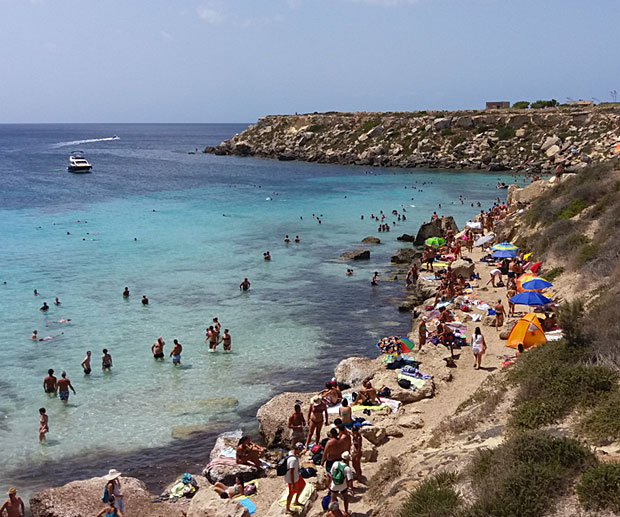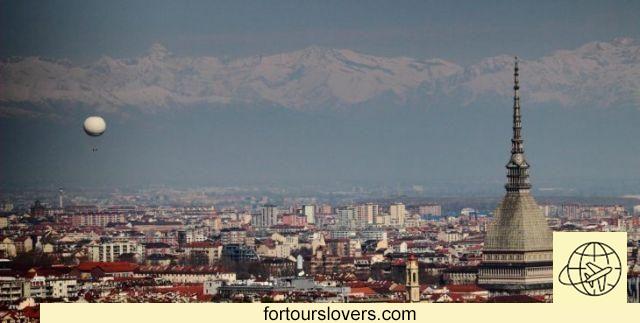
Torino
12 things to do and see in Turin and 2 not to doApplies to Torino a bit like what has already been said about Trieste: having been out of the circuit of Italian art cities for a long time - the famous triptych Rome, Florence, Venice - in the long run proved to be an advantage. In fact, in recent years the city has been able to redefine your image setting aside, without denying it, the industrial past in favor of a tourist present which revolves around the good living, food andmodern art. On closer inspection, in many respects it was bring out qualities that the city has always had and which however were clouded by the myth of the factory. Myth fueled above all by the FIAT which for a century dictated the timing of the economic, social and urban development of the city. There is a date conventionally used to mark Turin's entry into the new millennium. And the 2006, the year in which the Winter Olympics in the city. The work done to carry out the event and the subsequent one to capitalize on its benefits, after a decade still represents the engine on which the "new" Turin walks, of which, below, we will go and see the main points of interest. Happy reading.
1 Mole Antonelliana - Museum of Cinema
With its 167 meters of height the Mole (from the name of the architect Alessandro Antonelli in charge of the construction in 1863) is the undisputed symbol of Turin. Initially designed to make it a synagogue for the benefit of the Turin Jewish community, the mass never fulfilled this function and soon became the property of the municipality. For some years it has hosted the National Cinema Museum, one of the main attractions of the “new” Turin to which we referred at the beginning. Five rooms in which theevolution of cinematography from the first devices used for filming and editing, to the gallery of posters, passing through the in-depth study of the different film genres and phases (production houses, screenwriting, direction, actors, etc.) of which the film industry is composed . To see, ca va sans dire, also the dome of the Mole, reachable both on foot (in compliance with certain safety conditions) and with a panoramic lift inaugurated in 1961 on the occasion of the centenary of the unification of Italy.
For the visiting hours of the Museum of Cinema, the Panoramic Lift and the Dome Climb on foot see table.
| Opening days | Museum and Lift | Ascent of the Dome on foot |
| Monday | 09:00 20:00 |
closed |
| Tuesday | closed | closed |
| Wednesday | 09:00 20:00 |
closed |
| Thursday | 09:00 20:00 |
closed |
| Friday | 09:00 20:00 |
closed |
| Saturday | 09:00 23:00 |
12:00 16:30 |
| Sunday | 09:00 20:00 |
12:00 16:30 |
For more information on history, prices and guided tours consult the Official site: www.museocinema.it
2 Egyptian Museum
Bernardino Drovetti, Carlo Felice of Savoy e Jean Francois Champillon: it is thanks to these three personalities that it was formally born in 1824 il Royal Museum of Egyptian Antiquities, after the one in Cairo the most important Egyptian museum in the world. Drovetti, Italian diplomat in the service of Napoleon Bonaparte was appointed consul of France in Egypt as a reward for the military services provided during the victorious Alexandria campaign. Thanks to the good relations with the Egyptian court, the diplomat acquired over the years a very large one collection of statues, papyri, sarcophagi, mummies, bronzes, amulets sold afterwards in Carlo Felice of Savoy. The valuable acquisition of the king of Sardinia aroused the interest of Jean Francois Champillon, French archaeologist, considered the father of Egyptology having first deciphered the language of hieroglyphs in 1822. Champillon studied the Turin collection for a long time, contributing to its first cataloging, despite some quarrels with the then director of the museum. The years pass, the directors take turns and the exhibition obviously gets richer. A fundamental contribution was that of the Egyptologist Ernesto Schiapparelli who, in addition to continuously directing the Egyptian Museum of Turin from 1894 to 1928 (the year of his death), at the beginning of the 900s, as head of Italian Archaeological Mission, conducted several excavation campaigns in Egypt. At the time, agreements with the Arab nation provided for the possibility of dividing the finds found in half: hence the increased prestige of the Turin Egyptian Museum. Briefly said about the story, let's get to the news: today the visit of the rooms of the Egyptian Museum makes use of video guides e multimedia supports of the latest generation that provide a valuable contribution to the knowledge of the finds and the different paths that make up the museum. Furthermore, there is one available to scholars and enthusiasts Library with independent access from the Museum open Monday to Friday from 10:00 to 17:00.
For the visiting hours consult the table:
| Opening time | |
| Mon | 09.00 14.00 |
| Tue - Sun | 09.00 18.30 |
For more information on history, prices and guided tours consult the Official site: www.museoegizio.it
3 Cathedral of San Giovanni Battista
The historic center of Turin boasts a church heritage of absolute level: the Sanctuary of the Concordata, the Real Church of San Lorenzo, the Church of the Gran Madre, the "twin" churches of San Carlo Borromeo and Santa Cristina each deserve a visit. But woe to forget the Cathedral of San Giovanni Battista. The Turin Cathedral is undoubtedly at the top of the ranking of the city's sacred buildings. There are two reasons for the primacy: the first is architectural, since it is the only city church in Renaissance style; the second, on the other hand, has to do with the Holy Shroud, the sheet that would cover Jesus after death and on which the image of the face would remain imprinted. To house this rectangle of linen, which historians and archaeologists still argue about, in 1666 Emanuele Filiberto of Savoy he asked the architect Guarino Guarini the construction of a large chapel. The works, which lasted 28 years, delivered to the city of Turin a masterpiece of Baroque art which for 300 years kept the relic of the Shroud. Then in 1997 un fire due to a failure of the electrical system, it destroyed most of the interior of the Cathedral. Fortunately, the Fire Brigade managed to rescue the Shroud from that moment housed in a special case able to guarantee its best conservation. Broadly speaking of the Chapel and the Shroud (visible only on the occasion of ostensions arranged by the curia), there are also other aspects that are worth investigating. From white marble facade, To Bell tower, Diocesan Museum, up to reproduction of the Last Supper by Leonardo Da Vinci (work of Luigi Cagna, on the wall opposite the main altar), the Cathedral of San Giovanni Battista is unmissable stop of a holiday in Turin.
For the visiting hours e of masses look at the respective tables:
Visit
| Days | Timetable Morning | Hours Afternoon |
| Mon - Sat | 07:00 12:30 |
15:00 19:00 |
| Sunday | 08:00 12:30 |
15:00 19:00 |
Most Holy Masses
| Days | Timetable Morning | Hours Afternoon |
| Weekdays | 18:00 | |
| holidays | 09:00 | 18:00 |
4 Parco del Valentino
Un public park with inside one Botanical Garden, a castle, a "fake" medieval village it's a large fountain with statues, plays of water and light. It is normal that such a beautiful place, moreover located along the banks of the Po, is one of the places most frequented by the Turinese who come here for jogging, rowing or simply being outdoors. The Castle, now the seat of the Faculty of Architecture of the Polytechnic of Turin (see photo), is a Savoyard residence of the '600, strongly desired as a "maison de plaisance" by the Royal Madam Christina of France, sister of Louis XIII and wife of Vittorio Amedeo I of Savoy. The Medieval villageinstead, it has a particular story that deserves to be told. It is, in fact, a product of invention, having been built from scratch as a pavilion of ancient art ofItalian General Exhibition of 1884. Both the village and the turreted fortress deserve however for the philological rigor with which they were built: they present all the architectural and decorative details of the construction techniques of the '400 and therefore represent a faithful testimony, albeit artificial, of medieval town planning . Finally, the Fountain of Seasons and Months dates back to 1898 and was built on the occasion of the fiftieth anniversary of Albertino Statute. A celebratory work, therefore, designed by the architect Carlo Ceppi in Rococo style. For more information on the Valentino Castle (Unesco World Heritage) And the Medieval village consult the respective official sites: castellodelvalentino.polito.it and borgomedievaletorino.it.
5 Piazza Castello
La most important square in the city both from a historical and urban point of view. For the story we remember Senate e Royal Palace. The first, seat of the Subalpine Senate and the first Italian Senate, has been hosting a splendid one for years Civic Museum of Ancient Art (www.palazzomadamatorino.it). Several architects dedicated themselves to the construction of the building: the most famous was undoubtedly FIlippo Juvarra author of the monumental façade, easily recognizable for the classical-baroque style of the colonnade and large windows. Royal Palace (see photo), however, was the home of the Savoy dynasty until 1865. From 1997 Unesco Heritage, the building (www.palazzorealeditorino.it) is part of the Royal Museums of Turin which also includes the Royal Armory, the Savoy Gallery and the Museum of Archeology. On Piazza Castello there is also the Real Church of San Lorenzo famous, among other things, for hosting a copy of the Holy Shroud, often the only one to be visible, since the original, kept in the Cathedral, is so only on the occasion of the expositions arranged by the curia. Briefly said about the story, let's move on to urban planning: three of the four sides of the square are in fact surrounded by a extensive system of arcades, second in Italy only to that of Bologna. It is not over, because in Piazza Castello there are also the monuments to the Knight of Italy, in Emanuele Filiberto of Savoy andStandard bearer of the Sardinian Army. The latter right in front of the monumental façade of Palazzo Madama mentioned above.
6 Basilica of Superga
La Basilica of Our Lady of Grace, on the Superga hill, is about 10 kilometers from the center of Turin. However, unlike what happens with other out-of-the-way sites, where the time to reach the destination runs mostly anonymous, the trip to the sanctuary is already an attraction on which it is good to say a few words. We are talking about the Sassi-Superga denture tramway. This line, inaugurated in 1884, climbs up the hill covering a difference in height of 425 meters with uphill slopes greater than 20% in some points. As you go up the panorama opens up more and more to reach its peak on the panoramic terrace of the church. On clear days from the dome of the Basilica of Superga you can see the Viso, Gran Paradiso and Monte Rosa. A spectacular sight, as spectacular is the Basilica designed by that Filippo Juvarra of which we have already spoken about Palazzo Madama in Piazza Castello. To commission the work was Vittorio Amedeo II, as a sign of gratitude to the Madonna delle Grazie (whose statue is still visible in the Chapel of the Vow) for the victory against the French troops who had invaded Turin in 1706. In addition to Vittorio Amedeo II, he is also buried in the Basilica of Superga Carlo Alberto of Savoy, father of that Albertino Statute which in 1848 sanctioned the birth of constitutional monarchy. Among the reasons that contribute to the fame of the Basilica of Superga there is also the tragedy of the Grande Torino. On May 4, 1949, a plane carrying the players of the grenade team crashed into the rear embankment of the Basilica. A tragedy that the FIFA, the world's largest football body, has decided to commemorate with a ad hoc day. For more information on visiting hours to the Basilica of Superga consult the Official site: www.basilicadisuperga.com.
7 Piazza San Carlo
At the beginning we referred to the "New" Turin redesigned for the 2006th Winter Olympics held in XNUMX. Piazza San Carlo, which has always been considered the good living room of the city, is theemblem of this rebirth. The redevelopment works of the square, suitably transformed into pedestrian island, have greatly contributed to the image and tourism economy of Turin. On the other hand, it was a question of revaluing the architectural heritage already exists: come on arcade, with shops and some of the historic city cafes, at asked "twins" di San Carlo Borromeo (hence the name of the square) e Santa Cristina, until the "Caval and Bronz" equestrian statue dedicated to Emanuele Filiberto I (not to be confused with the other Emanuele Filiberto di Savoia to whom a statue in Piazza Castello is dedicated). In short, one historic square which, however, has always had a close feeling also with sport: not only with the aforementioned Winter Olympics but above all with football, since it is Juventus fans gather in this square to celebrate the team's victories. A custom, the latter, which however recently had an unpleasant implication: on June 3, 2017, on the occasion of the Champions League final against Real Madrid, a large screen was set up in Piazza San Carlo to allow the many supporters of the Juventus team present in the city to watch the match. However at the end of the match won by the Spaniards a wave of collective panic, apparently due to the explosion of some firecrackers, caused one death and thousands of injured. An unfortunate event that however does not detract from the charm of this seventeenth-century square that remains unmissable stop on any visit to the citybe it short or long.
8 Museum of the Risorgimento
The oldest, best known and most complete museum of homeland history he could only find himself a Turin, the first capital of Italy from 1861 to 1865. The museum is located inside Carignano Palace, not far from the central Piazza Castello and Piazza San Carlo. The vast museum exhibition does not limit itself to retracing the steps towards unification carried out from 1815 to 1861 but also addresses the sociological and political themes arising from the unitary path: the birth and consolidation of the bourgeoisie on the one hand, and that of the working classes and workers on the other. In short, if you want to deepen the thousand implications of the Italian Risorgimento, a visit to Palazzo Carignano is absolutely a must. Aware of the complexity and breadth of the issues addressed, the managers of the structure have thought about different routes of different duration, all with theuse of multimedia supports (audio guides, video guides and apps) for a greater understanding of national history. The Museum of the Risorgimento respects the following visiting hours:
| Days | Working Time |
| Mon | closed |
| Tue - Sun | 10:00 18:00 |
For more information on guided tours, prices and other events consult the Official site: www.museorisorgimentotorino.it.
9 Circle of Readers
A few meters from Palazzo Carignano there is another historic building that absolutely deserves to be visited. Let's talk about Graneri Palace of the Rock historical Circle of Artists of Turin, since 2006 converted into Circle of Readers with multiple initiatives aimed at exploring the developments of the storytelling between creative writing and technological opportunities. Therefore a dynamic cultural center located in one of the most beautiful buildings in Turin with several rooms for reading books and newspapers and, as if that were not enough, a bar and a restaurant. Find out more about activities ed private events visit the Official site: www.circololettore.it.
10 GAM
Paul Klee, Amedeo Modigliani, Andy Wahrol e Giorgio De Chirico are just some of the artists featured in the Turin Gallery of Modern and Contemporary Art (GAM). It should be remembered, in fact, that the Savoyard city was the first in Italy to promote a public collection of modern art at its most representative building, the Mole Antonelliana we mentioned at the beginning (see point 1). At the end of the nineteenth century the exhibition was moved to a museum pavilion in via Siccardi (now Galileo Ferraris) which was destroyed during the Second World War. On the same area, however, in 1959 the building was built that still houses this collection which over the years has exceeded the 45.000 works between paintings, sculptures, drawings e video. In the 90s of the last century, the Gallery of Modern Art went through a phase of profound renewal which at the beginning of the XNUMXst century allowed its entry into the Turin Museums Foundation. In addition to the permanent exhibitions, the GAM hosts temporary exhibitions and various cultural and educational activities. Also worth seeing is the Art Library and the stocked photographic archive of the foundation referred to above. For the visiting hours of the museum see the table.
| Days | Working Time |
| Mon | closed |
| Tue - Sun | 10:00 18:00 |
For more information on scheduled events, prices and guided tours consult the Official site: www.gamtorino.it.
11 Porta Palazzo market
So far we have “wandered” through museums, churches and squares in search of the Turin in every possible artistic and cultural declination. The most important place of all, mirror of the gods, was missing social changes that have hit the city during the 900s. We are talking about the Porta Palazzo Market - Borgo Dora, the largest open-air market area in Europe, a crossroads of goods and people of all geographical origins. This market became in the 50s and 60s of the last century the main meeting place for southern immigrants that tens of thousands were incorporated into FIAT and related factories. Since the end of the 80s, however, Porta Palazzo has experienced another type of immigration, North African and Chinese which, in addition to bringing their own goods, has in some cases exacerbated the problems of decay and public order already existing. Issues that the municipal administration has decided to tackle head on in a broader way urban redevelopment and transformation project functional to the appointment of the 2006 Winter Olympics mentioned several times in the course of this article. The improvements, in the case of the Porta Palazzo market, have been evident and a few numbers are enough to confirm this. In fact, there are more than 1000 street vendors present for a tour of visitors that exceeds 100.000 weekly admissions. Meat, fish, fruit and vegetables, clothing, footwear, electronics: everything is sold in the Porta Palazzo market, without forgetting the collateral activities that have arisen over the years (bars, restaurants, hotels, landlords, etc.). In short, there is something for all tastes, pockets and ethnic groups. Just observe the precautions normally used in crowded places (do not keep the wallet in the back pocket; do not go around with the bag open; do not show off particularly expensive earrings, necklaces and bracelets, etc.) to be repaid with one of the most interesting and formative experiences of a visit to Turin. For learn more visit the place: discoverortapalazzo.com.
12 Esoteric Turin Tour
The "dark side" of Turin has always been an element of great tourist appeal. It is no coincidence that in recent years, around the numerous masonic symbols scattered around the city have sprung up tours and evening visits with lots of storytelling annex. Almost always the starting point is Statuto Square, whose statue would represent none other than Lucifer himself (see photo). Two other areas much loved by fans of this genre of stories in which history and magical-religious elements are mixed are via Bonelli and fountain of Piazza Solferino. The executioner in the service of the Savoy court would have lived in the narrow and shady Via Bonelli, while the Angelica Fountain in Piazza Solferino would contain numerous Masonic symbols, starting with the two male-looking statues representing the seasons of autumn and winter. Finally there is Piazza Castello, The "white heart" of the city, in which the magical influences become benevolent compared to the "black" omens of Piazza Statuto. In short, there is enough material for one occult counter-history of Turin which attracts an increasing number of visitors and esoteria enthusiasts. To do!
1 Beware of pickpockets
What has already been said many times about other large cities applies to Turin. In the particularly crowded places, as the Porta Palazzo market can be, it is worth doing beware of pickpockets. Not that there are droves of them, but the probability of running into some attacker is necessarily greater.
2 Do not drive around the city
Il Old Town of Turin is walk-friendly. Since it is in the center that the are concentrated most tourist attractions there is little point in driving. Moreover, between restricted traffic areas and pedestrian areas it can be difficult for those who are not local to extricate themselves.




